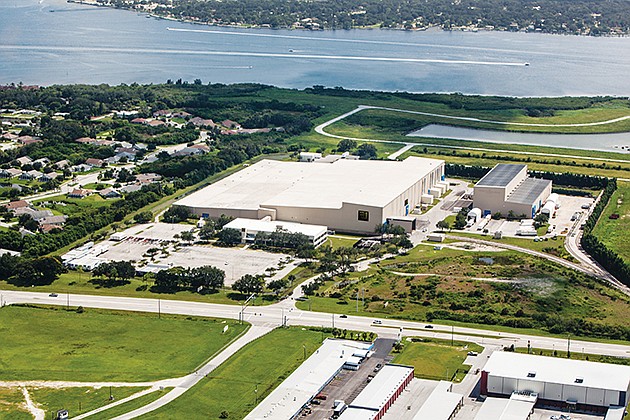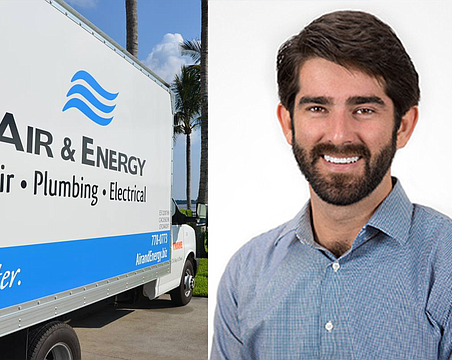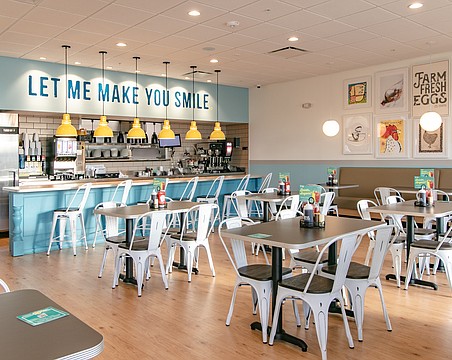Executive Summary
Industry. Commercial Real Estate Trend. Vacant properties as economic development opportunities Key. Financial analysis is critical when considering older properties for new uses.
For years, the former General Electric Co. turbine plant in Manatee County sat derelict and weathered, a bloated reminder of lost manufacturing jobs.
The Palmetto property — 580,000 square feet on 46 acres — ranked among the largest empty buildings not only in Florida but along the nation's East Coast.
Mired in bankruptcy, the plant might have remained vacant for decades, but Feld Entertainment Co. saw an opportunity to save money and increase operating efficiency at the same time.
In buying the former manufacturing plant for $8.35 million in early 2012, the operator of Ringling Bros. and Barnum & Bailey Circus and the Disney on Ice franchise consolidated operations scattered throughout Florida. Since then, it has developed a full-scale production headquarters capable of housing a diversity of shows that range from monster trucks to ice skating princesses.
Feld has subsequently invested $20 million to renovate and update everything from windows to air-conditioning to lighting.
Today, Feld's new world headquarters contains hundreds of workers and by 2033, it's estimated Feld will have added more than $4 billion to the region's economy, according to a government analysis, all stemming from a building that was thought to be unsalvageable.
“We've added more jobs and at a faster rate than we anticipated, and at the same time, we took a building from something that was a derelict eyesore to a Class A office and production facility,” says Casey Rodgers, Feld's vice president of finance and strategic planning.
Across the Gulf Coast, aging office and industrial properties like the old GE plant present significant challenges — and opportunities — for economic development officials, landlords, investors and real estate brokers. Although statistics on how many such properties exist are vague because some properties are not considered to be on the market, many of the buildings are being seen in a new light. As the area's commercial real estate market heats up, new development is viewed as too time consuming in many cases and existing properties often have sought-after infrastructure already in place.
For companies like Feld, the chance to reuse an existing property saved both time and money — and provided access to a mature labor pool that was critical to its planned expansion.
“Palmetto has the entire spectrum of labor that was important to us,” Rodgers said. “It has everything a major city needs and a town wants, so the building made good sense for us.”
Feld's consolidation saved more than $1 million annually in occupancy costs, Rodgers said. More importantly, Feld acquired the property for less than $15 per square foot, a considerable discount to the roughly $50 per square foot to $75 per square foot that would have been required to build the same space from the ground up.
Sleeping Giants
But the math and logistics don't always work in favor of a reuse.
Often, aging industrial structures created with a specific user in mind lack necessities for modern businesses.
“Limits tend to be found in the areas of ceiling heights, depth of concrete and a lack of loading docks, due mainly to the age of the building,” says Shane Farnsworth, business development manager with the Lee County Economic Development office. “They often result in constraints based on the industry's needs of today.”
Environmental issues also are frequently a stumbling block.
“Contamination can mean a redevelopment nightmare,” says Bruce Register, the economic development chief in Collier County. “Some sites have such baggage, but those issues have to be overcome before reuse can occur.”
In Sarasota County, remediation issues have affected the former L3 Communications' site at 100 Cattlemen Road. Some 67,000 square feet is vacant on a site designated as a
“brownfield,” meaning it contains some level of contamination that would require spending money to remedy, says Tony Veldkamp, managing director of the Sperry Van Ness Commercial Advisory Group in Sarasota, which is marketing the property.
But many large buildings remain empty because of their size. Landlords may choose not to subdivide them, and the region hasn't typically attracted significantly large distribution users.
In Manatee County, some 100,000 square feet of space remains available at a former Wellcraft Marine plant; the Sarasota-Bradenton Convention Center space contains about 120,000 square feet; and a Donzi Marine building on 10 acres has roughly 116,000 square feet available, according to Bradenton Area Economic Development Corp. officials.
Farther north, International Paper Co. owns a pair of vacant and available buildings in Polk County, measuring 328,000 square feet, in Auburndale; and 273,000 square feet, in Lake Wales.
And earlier this month, US Foods Inc. told employees it plans to shutter its Lakeland distribution operation and abandon a 150,000-square-foot building. More than 200 workers will be affected by the move, which will shift operations to Tampa and Port Orange.
It's not just large warehouses that remain on the market for extended periods, though. Office buildings are often just as difficult to market because of their specialized nature or age.
Most recently, 7040 Professional Parkway in Sarasota County came on the market for $4.9 million, according to information from owner Starling Realty. The 61,100-square-foot office and light industrial building was vacated in early 2014 by light-emitting diode-maker Evolucia after flagging sales caused it to lay off staff.
That property joins a handful along the Gulf Coast, including the former MCI Building in Pinellas Park. That three-story building, in the Gateway Technology Park, contains roughly 125,000 square feet.
Saddled by a lack of signage and its location near a waste disposal plant, the 25-year-old MCI Building has been vacant for more than a decade.
Likewise, a roughly 52,000-square-foot, three-building complex in the Punta Gorda section of Charlotte County that had once housed IMPAC University has been vacant for more than five years, said Tom Patten, who heads economic development efforts in that county.
The buildings, at 900 W. Marion Ave., were acquired two years ago for $3.52 million by Boca Norte LLC, a Venice investment firm controlled by billionaire landowner Brad Kelley. Patten said the 21-year-old campus, which contains a basketball court, 247-seat auditorium, classrooms and a library, is being marketed to educational institutions.
Success Stories
Like Feld, however, recent examples abound of large vacant offices being reoccupied for a fraction of the cost and time needed to build.
In early 2013, for instance, weight loss firm It Works! Global's founder Mark Pentecost bought a 50,000-square-foot former retail building in Palmetto for the company's headquarters.
The 15-year-old building, which had sunk into foreclosure, was purchased for $3.12 million, property records show. Prior to its move last year, Pentecost's firm invested about $7 million to install eateries, a putting green, a giant slide, fire pit and other amenities into 908 Riverside Drive.
“In the current business climate, people want to move in as quickly as they can,” says Mike Meidel, director of Pinellas County's economic development office. “So there's an advantage to having existing, even vacant, inventory.”
That was the case in Polk County, where trailer manufacturer Husky Cargo has acquired the Homes of Merit Building in the Bartow Municipal Airport for its new headquarters, says Spiros Balntas, senior project manager for the Central Florida Development Council of Polk County.
The roughly 100,000-square-foot manufacturing and office building, which had been vacant for more than five years and was scheduled to be razed before Husky stepped in last year, will be home to about 125 workers, Balntas says.
Such reinvigorations also often come with another advantage: premier locations.
“Through adaptive reuse, tenants are often able to land in areas they couldn't otherwise, areas with high-traffic or that are mature for retail,” says Stan Stouder, a founding partner of brokerage firm CRE Consultants, who owns a renovated 1920s building in Fort Myers that will reopen as an art gallery later this year. “And they can do so at less cost, even though there are barriers to entry because land may be scarce.”
In some cases, companies go after large abandoned properties precisely to accommodate future growth. That's what happened in late 2012, when JRL Enterprises Inc./Marine Concepts bought the shuttered Wellcraft Marine plant in Manatee County to make molds for everything from boats to amusement park rides.
“We knew we'd have excess capacity, which we wanted, rather than having to do build-out later on,” says JRL President Matt Chambers.
Today, the Cape Coral-based firm occupies roughly 70% of the 340,000 square feet of space in the six-building complex, which had been vacant for four years when JRL bought it.
Chambers adds that at its current growth rate, JRL will likely almost completely occupy the former 29-acre brownfield site within five years.
While such redevelopments are rare, they can result in a lucrative outcome for both the community and the company.
“We found everything we planned to create could be done inside the building,” he says. “It's absolutely the right fit for us. We're the poster child for how good adaptive reuse can be.”






